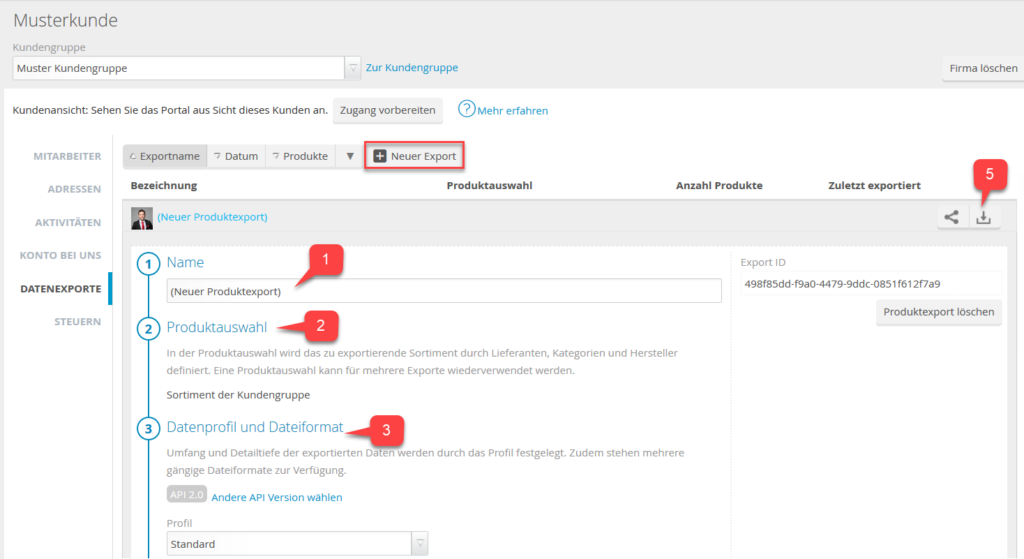
In the ‘Data exports‘ section, you can export customer product assortments. The exported products can then be processed outside of the B2B Suite. For example, the exports could be viewed in Excel as an overview, or used to transfer the information to other systems, such as ERP systems. Or alternatively the exports could also be used for another online shop. In addition, if you are listed as a supplier for other customers, it helps you to identify products easily and comprehensively.
Important! To ensure the correct output of the portal’s assortment in the export, you must activate the assortment cache in the settings for the customer group.
In order to keep track of your exports, it is important to individually name your data export after you have created a new product export by clicking the ‘New export‘ button (1). As soon as the product export has been created, ITscope will directly assign an associated export ID to the export.
The product selection (2) shows which products of the customer will be exported.
By specifying a data profile and file format, you are able to control the scope and level of detail for the exported data. The following profiles are available (3):
- Standard (json, xml, csv)
- Standard – price/availability update (json, xml, csv)
- Developer (json, xml, csv)
- Developer – price/availability update (json, xml, csv)
- BMEcat1.2 (xml)
- BMEcat1.2 for Meplato (xml)

You can select the content language for your export in the ‘Content‘ section. Detailed product texts can also be included in the export (4). You can choose from the following languages: German, English, French, Italian, Dutch and Spanish.
With BMEcat1.2 and BMEcat1.2 for Meplato, you have access to additional options to further configure your export content:
- Use alternative supplier article numbers (SKUs) in BMEcat, here you have the option to export the supplier article number (product ID) of a supplier of your choice instead of the ITscope product ID.
Additionally, in the event that certain product IDs of the supplier you have selected do not exist, the ITscope product IDs can be used instead if the ‘Also export products without alternative supplier article number‘ option has been activated. - Select classification system(s) for BMEcat, here you have the option to select different classification formats for your export. The following formats are currently available:
- eCl@ss 10.1, eCl@ss 5.1.4, eCl@ss 7.1 and eCl@ss 8.1
- ETIM 7.0 Electrical
- ITscope
- UNSPSC 20.0601
The choice of classification systems is intended to help you choose the right product classification standard for your industry. Multiple classification systems can be selected. The choice of classification system is highlighted in blue.
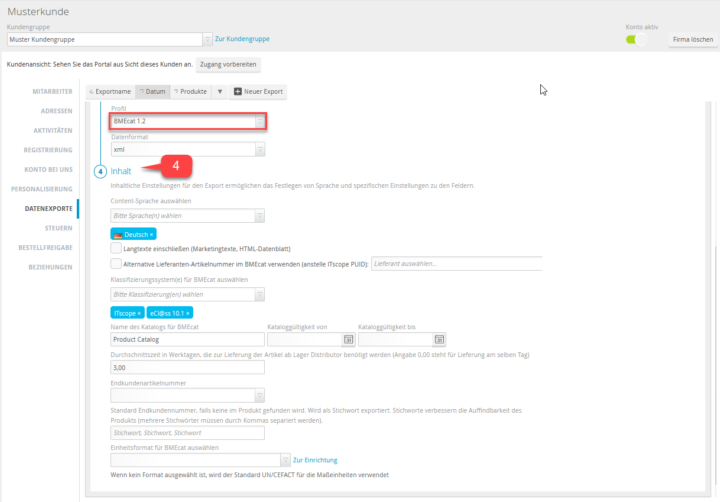
- Via ‘Name of the catalogue for BMEcat‘ and the ‘Catalogue validity from‘, as well as ‘Catalogue validity to‘, you can assign a specific name and a validity period for the export
- The average time in working days indicates the time needed to deliver the items from the distributor’s warehouse. It is also possible to specify half days. Example: 0.50 corresponds to half a day.
Important! For the calculation of the delivery time, the following must be taken into account:
1. The average time in working days corresponds to the delivery time if you have the product OnStock, i.e. available in stock
2. If the product is listed as Warehouse, i.e. in an external warehouse, the average time entered in working days is multiplied by the factor 1.75. Example: 2.50 * 1.75 = 4.375, i.e. 4 days average delivery time
3. If the product is OnOrder, i.e. further stock is incoming, the average time entered in working days is multiplied by the factor 2.25. Example: 2.50 * 2.25 = 5.625, i.e. an average delivery time of 6 days.
If the item is not available (NotAvailable) the following will be output in your export:
Mercateo – 1000 days average delivery time
Meplato – 300 days average delivery time - The end customer article number (SKU), if available, specifies the product selection for your customers
- Keywords: if no end customer article number (SKU) is found, keywords can be exported. These help to improve the findability of the products. Example: Lenovo, laptop, …
- Last but not least, you can also select the packaging unit format for BMEcat according to the desired export product details – this must be added as a new allocation if different from the UN/CEFACT standard. Read more about this in the section on Selecting the format of units for BMEcat.
To complete the export, simply click the download button (5) to download the content. Your export file is now available as a ZIP file.

UOM – Selecting the format of units for BMEcat
The customisation of units of measurement in the BMEcat export gives you the necessary flexibility in mapping units.
The UN/ CEFACT format is set as the default format for all units of measurement.

You can create a new mapping via the To set-up button. You will then be directed to the UOM section of the portal setup.

Using the Add assignment button, you can now add your product assignment that differs from the standard.
This opens the following dialogue box:
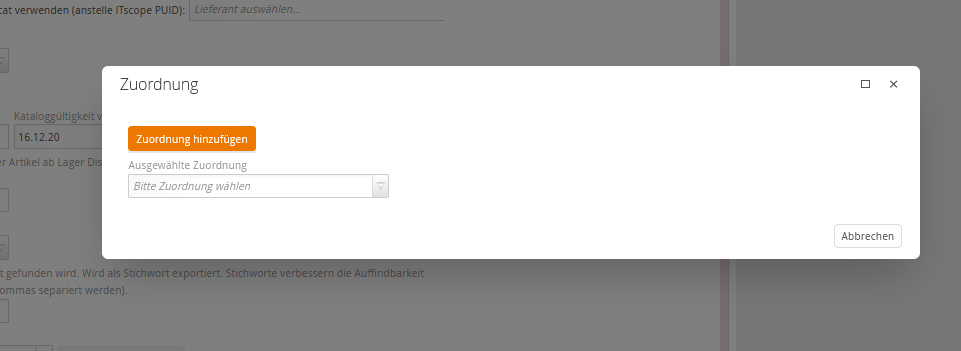
If you have already created an assignment that differs from the standard, you can select this using the Selected assignment drop-down field.
If you have not created a mapping yet, you can do so via the Add assignment button. The following dialogue box opens:
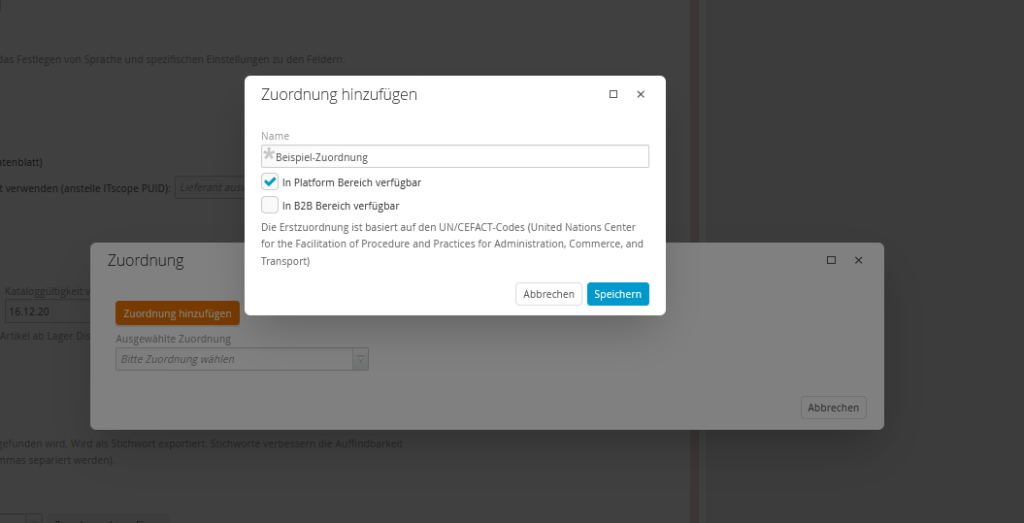
Here you can provide a name for the new assignment.
Additionally, you can decide whether the assignment should apply exclusively to your customers and partners on the ITscope platform, or also to your customers and partners in the ITscope B2B Suite, i.e. your B2B portals. You can adjust these availability/scope settings at any time afterwards.
You can then use the Selected assignment drop-down menu to select the newly created assignment and edit it accordingly. The following window opens in the dialogue box:
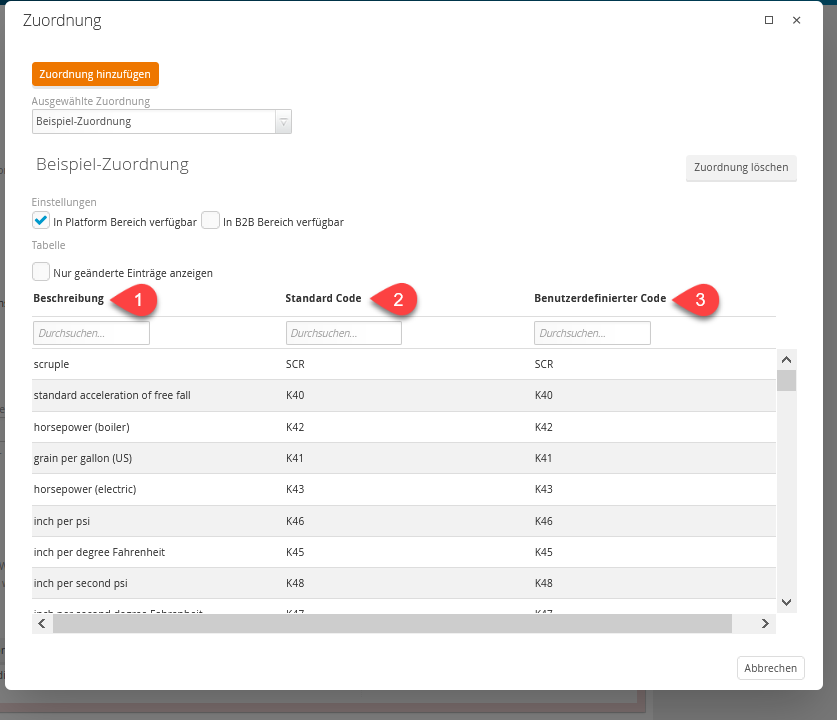
In this dialogue box, you can see all the units of measurement that are part of the standard UN/ CEFACT format.
- Description: the description contains an worded description for the corresponding unit of measurement. In the top field – Search– you can search for a specific description.
- Standard code: the standard code refers to the units of measurement as defined by the UN/ CEFACT format. In the top field – Search – you can search for a specific standard code.
- User-defined code: the user-defined code is the change/adjustment/deviation you want to make or have made from the standard code. If the user-defined code contains the same content as the standard code, then this will be interpreted as the unit of measurement for your assignment. Using the field at the top – Search – you can search for a specific custom code.
Important! Only a unit of measurement that has been edited will have an effect on the assignment of unit formats. Without adjustments, the standard UN/CEFACT format is used!
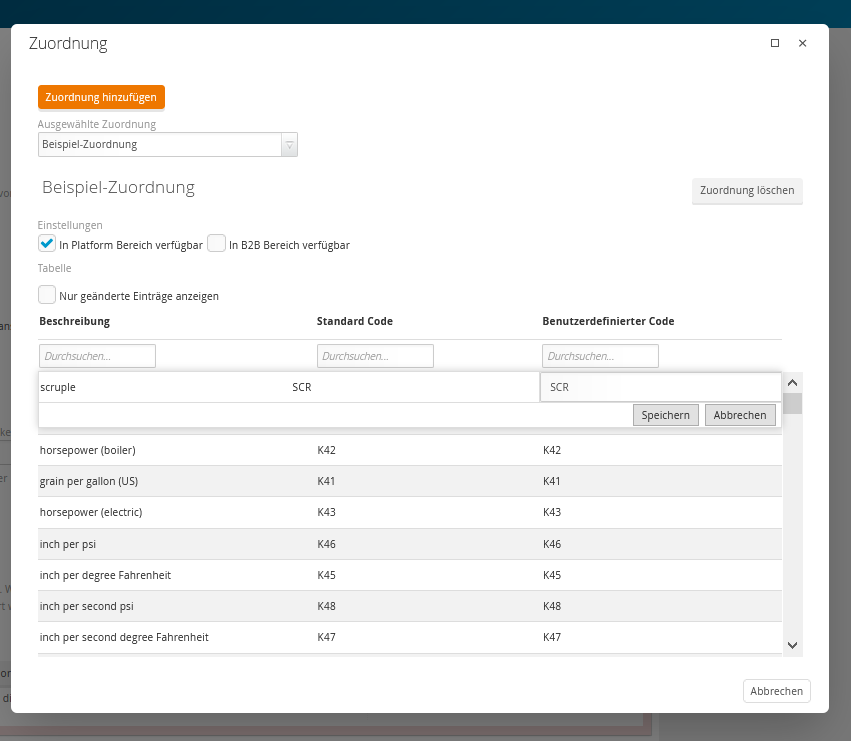
To change the assignment of a particular unit of measurement, double-click the corresponding unit of measurement.
You will then have the option of adjusting the user-defined code and saving it using the Save button, or discarding the change using the Cancel button.
Similarly, you can also make adjustments to all units of measurement from the UN/CEFACT standard as required.
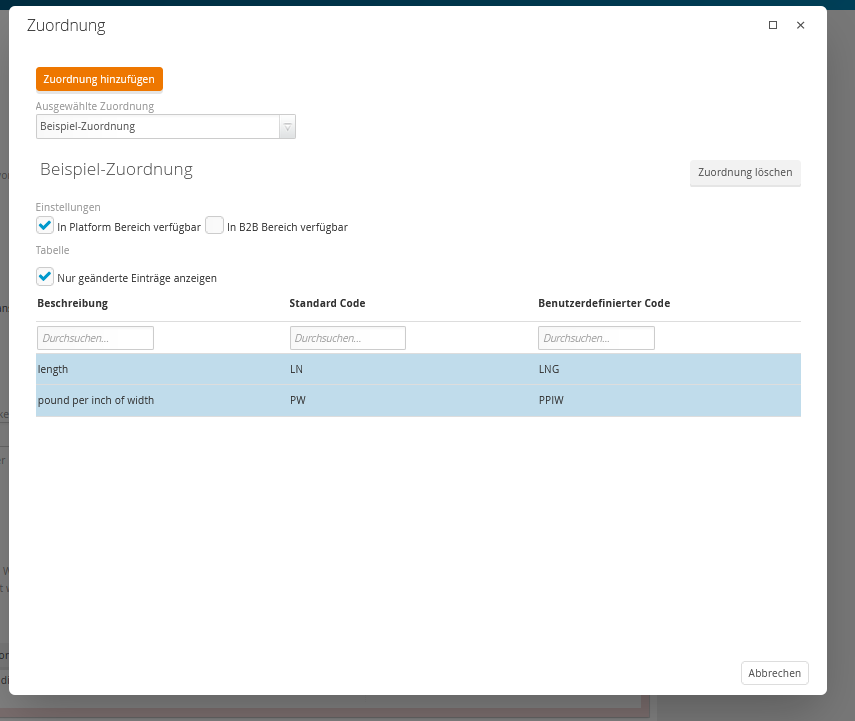
To keep track of the units of measurement you have changed, you can choose to only display edited entries by selecting ‘Show changed entries only‘.
This way you can see the changes you have made from the standard unit(s) at a glance.
After following the above steps, you can then select the desired individual unit mapping for the export:

UOM – Unit of measurement mapping in the e-procurement section
The UOM mapping described in the previous chapter can also be used for the e-procurement section.
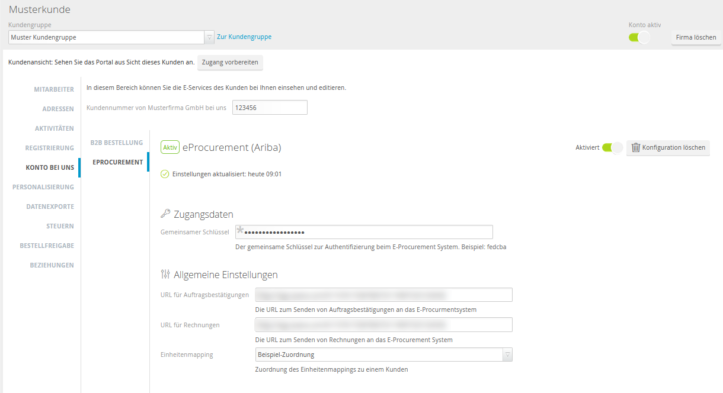
You can also use the UOM created in the set-up section for the unit mapping of your e-procurement module.
This allows you to import the units individually for the procurement process and have them assigned automatically.
